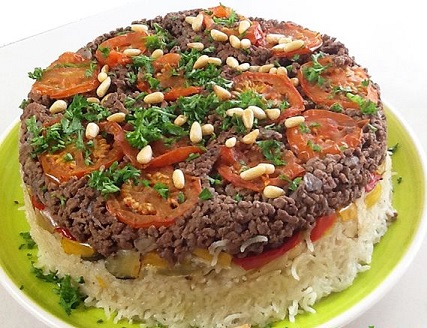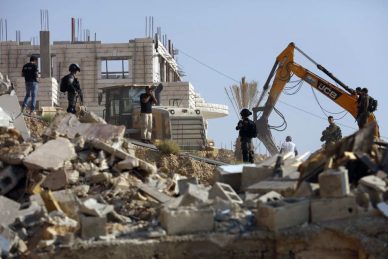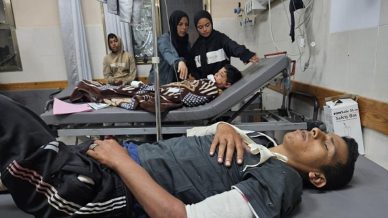There is a sharp difference of Palestinian courses eaten on a daily basis in comparison to those reserved for holidays—which include family and religious occasions.
Ramadan meals
In the past during the fasting month of Ramadan the Musaher of a town would yell and beat his drum to wake up the town’s residents forsuhoor (lit. ‘of dawn’)—usually very early in the morning ranging from 4-6 am. The meals eaten during this time are light and foods include labeneh cheese bread and fried or boiled eggs along with various liquids to drink. The muezzin’s call to dawn prayers signaled the beginning of sawm or fasting.
Breaking the day’s fasting traditionally begins with the brief consumption of dates and a chilled beverage. Palestinians make a variety of fruit-based beverages including the flavors tamar Hindi or tamarind sous or licorice kharroub or carob and Qamar Eddine. Tamar Hindi is made by soaking tamarinds in water for a many hours then straining sweetening and mixing it with rose water and lemon juice. Kharroub is made similarly except instead of tamarind carob is used. Qamar Eddine is made of dried apricots boiled into a liquid and chilled.
The term iftar has a different meaning in Ramadan where it is used to describe the ‘breaking of fasting’ unlike its common meaning of breakfast in the morning. Iftar begins with soup either made from lentils vegetables or freekeh. Shurbat freekeh (“freekeh soup”) is made from cracked green wheat cooked in chicken broth. There is a wide variety of meals served during iftar ranging from small plates or bowls vegetable-based courses or saniyyehs (large plates or trays) of a particular meat. Common small dishes on the dinner table arebamia—a name for okra in tomato paste mloukhiyeh—a corchorus stew—or maqali an array of fried tomatoes aubergines potatoes peppers and zucchini. Pilaf or plain freekeh are normally served alongside the dinner meat. Each household prepares extra food to provide for their neighbors and the less fortunate—who must receive an equal version of the food eaten at home.
Ramadan sweets
A common Palestinian dessert reserved only for Ramadan is qatayef which could be provided by the numerous street vendors in several major Palestinian cities or towns as well as typical Palestinian households. Qatayef is the general name of the dessert as a whole but more specifically the name of the batter that acts as a base. The result of the batter being poured into a round hot plate appears similar to pancakes except only one side is cooked then folded.
The pastry is filled with either unsalted goat cheese or ground walnuts and cinnamon. It is then baked and served with a hot sugar-water syrup or sometimes honey.
Ka’ak bi ‘awja is a semolina shortbread pastry filled with ground dates called ‘ajwa or walnuts. The dessert is prepared towards the end of Ramadan to be eaten during Eid al-Fitr—a Muslim festival immediately following Ramadan as well as during Eid al-Adha. Zalabieh which consists of small crunchy deep fried dough balls in dipped in syrup is served. The dough is made from flour yeast and water.
(Source: Wikipedia)

















